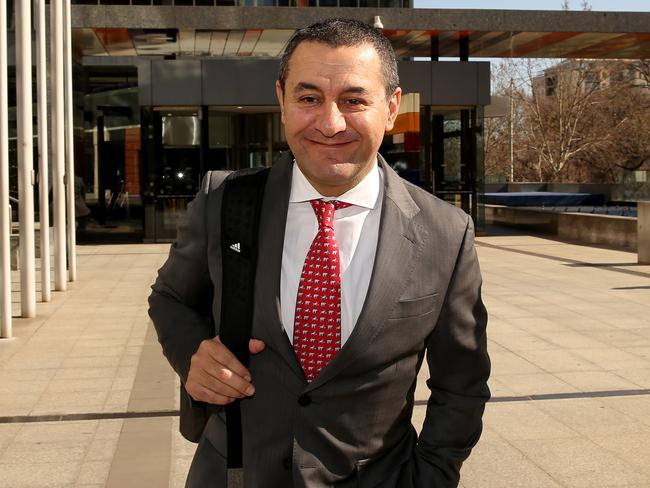Prepare for more super fund mergers

Your Future, Your Super didn’t seem to be something to quietly bury beneath the budget coverage. In fact, in the foreword, Treasurer Josh Frydenberg promised the changes would save Australians an implausibly precise $19.7 billion over 10 years, so it’s hard to know why the thing was bunged in the budget.
The four parts of the plan are: employees to be only put into a default funds once, when they first join the workforce; setting up an official comparison site so funds can be compared; having an annual performance test, with “clear consequences” for failing it; and increased transparency about fund spending.
There are still plenty of details to be worked out, such as what the annual performance test will actually test, what’s the threshold for failure and the consequences for failing it, but on the whole the document was a lot softer than the unloved industry funds were bracing for.
They thought cancelling the next increase in the super guarantee levy and allowing more early withdrawals were on the cards, at least.
But the reforms will undoubtedly favour the industry funds, especially the big ones. They are about to get bigger, and more powerful.
Two weeks ago, the $6 billion Media Super announced it was merging with the $54 billion construction fund, Cbus, and many more mergers are coming.
There are now 95 super funds providers with 170 different funds listed by APRA – an absurd number, even for Australia’s $2.7 trillion super pool.
Industry leaders believe we are heading for only 10-20 funds, and most of those are likely to be industry funds.
The reason is scale, which is why Media Super had to give up. Scale is the key competitive advantage in superannuation, arguably the only one, since it governs both fees and investment returns before fees.
The average long-term difference in return between the big super funds and the medium and small ones is 70-100 basis points per year, and the average difference between retail funds and industry funds is another 100 basis points.

The main reason for those two differences is the self-fulfilling benefit of scale and asset allocation, and both of those things have a lot to do with infrastructure and other unlisted assets, as well as the ability to negotiate lower fees from wholesale asset managers.
Big funds like AustralianSuper and HostPlus can invest directly in infrastructure and other unlisted assets. That can cut out the middlemen like IFM and Utilities Trust of Australia, which charge compounding fees of their own, as opposed to the internal salaries that Australian Super etc would pay to manage the assets.
Retail funds tend to stick with liquid assets and avoid infrastructure in any case – probably to avoid liquidity risk, although that’s not entirely clear.
It’s certainly the case that retail funds, especially the new millennial-focused brand-marketing ones, tend to offer Beta, or market returns, while industry funds try to provide more Alpha, or extra returns, by investing more in unlisted assets like infrastructure, venture capital and private equity.
It’s true that investing in infrastructure has been a winning strategy over the past ten years as interest rates have fallen because lower discount rates have led to higher valuations, and at some point that will reverse – although there’s little sign of that yet.
Also, airports tend to feature heavily in infrastructure portfolios and they are challenged at the moment, to say the least.
Nevertheless, scale tends to cover a lot of problems, so the pandemic and the future era of rising interest rates are both likely to put more pressure on smaller funds than larger ones.
Meanwhile the proposed super fund comparison tool and the objective performance test will both favour the large industry funds, simply because their performance is better for the reasons outlined and their fees are lower.
A well-used and believed government comparison tool could set up a death spiral for small industry funds and retail funds: if their performance after fees starts off looking worse, money is pulled out and as they shrink, the performance worsens and more money is pulled out.
Better to merge while you can, before it happens, so there is likely to be a wave of deals before it gets going next July.
One more thing: the JobMaker hiring credit in the budget, giving employers a subsidy for hiring someone under 35, with more for under-30s, will lead to more jobs in retail and hospitality, which is where people of that age get their first jobs.
Combined with the new rule one default fund for life – the one you started with – it’s going to be a boon for REST, the retail super fund, and HostPlus, the hospitality fund.
So we are heading for a world in which a dozen or so not-for-profit organisations, half-owned by employer groups and half-owned by unions, but with a majority of independent directors, will control the provision of capital in Australia, as well as retirement savings.
And as a result, financial power is shifting from the very much for-profit banks to a bunch of very different outfits, with very different motivations.
Alan Kohler is Editor in Chief of Eureka Report







It was a bit weird that the budget last Tuesday included some reforms to superannuation that had nothing to do with it.